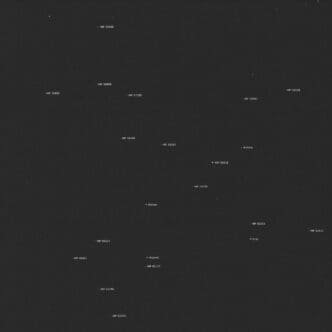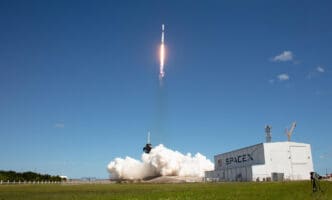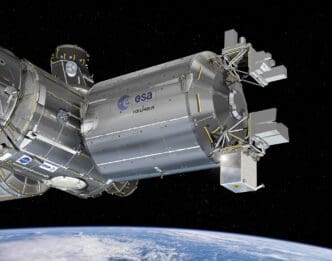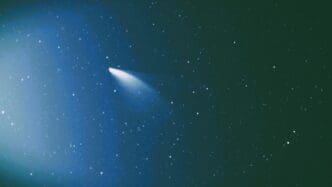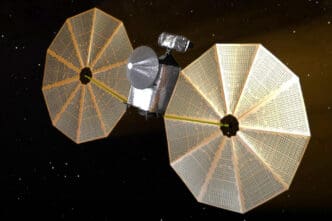NASA’s Europa Clipper is on a stellar journey to Jupiter. It’s capturing images of stars, aiding its path to the icy moon Europa. The spacecraft, launched in October 2024, uses star trackers to orient itself in space. Today, it’s over 53 million miles from Earth – a voyage not just about destination, but exploration.
Along its ambitious route, the Europa Clipper recently captured a celestial mosaic, a first since its launch. These images might be snapshots of distant stars, yet they serve a critical function. They provide the data needed to accurately point the spacecraft, essential for communication and future scientific discoveries. The journey is just beginning, and each captured star brings the mission one step closer to its goal.
A Journey Guided by Stars
As NASA’s Europa Clipper ventures towards Jupiter, its primary guide is a set of star trackers. These vital tools do more than just capture images; they determine the spacecraft’s precise orientation. With each star captured, mission controllers can pinpoint the Clipper’s position, crucial for pointing its antennas back to Earth and ensuring smooth data transmission.
The star trackers recently captured their first images of space, featuring stars from the constellation Corvus. This serves as a practical check on the health of onboard instruments following the spacecraft’s launch. By mapping stars visible from these trackers, the spacecraft assures its navigational orientation, enhancing the reliability of its complex communication systems.
The Checkout Success
Capturing images is not just a backdrop to the cosmos but a significant milestone for the Europa Clipper. This moment marks the successful hardware checkout of its star trackers, key instruments ensuring the spacecraft stays on course.
According to Joanie Noonan, who leads the mission’s navigation operations, these trackers are indispensable. Normally, images aren’t downlinked, but this exception verifies that all systems are green-lit post launch.
The successful checkout of these systems, including their lenses, validates their readiness for what lies ahead. While not directly involved in navigation, these star trackers are pivotal for the mission’s scientific goals. By knowing where the spacecraft’s instruments are oriented, engineers can fine-tune data collection from Europa, enhancing the scientific return.
Engines of Exploration
The star trackers might seem like a technical footnote, but they play a foundational role in orienting Europa Clipper’s instruments, including its imaging systems and gravity science tools. As stargazers might appreciate the aesthetic value of these images, their real purpose is far more crucial. They ensure the spacecraft’s instruments are aimed perfectly for maximum data yield.
The imaging system covers its delicate lenses for now, waiting for the moment when the spacecraft will fly by Europa and capture its icy surface. This is a dance of precision, one that ensures every instrument functions in harmony to gather invaluable insights about the potential for life on the moon.
At its current trajectory, the spacecraft travels at a blistering 17 miles per second relative to the Sun. Quickly approaching Mars, it will leverage the Red Planet’s gravity to accelerate toward its distant target. Such maneuvers highlight the careful planning and execution required to undertake such a daring mission.
Europa Clipper’s Science Goals
Exploring Europa is not just about reaching an icy moon. NASA has set three primary scientific objectives: assess the thickness of Europa’s icy crust, analyze the composition of potential oceans beneath, and characterize its geology. These goals aim to unravel the moon’s ability to support life.
The mission promises to deliver insights with its suite of nine science instruments, which have potential to paint a detailed picture of this distant world. Insights into its geology, chemistry, and potential for life are among the key scientific pursuits, with the main spacecraft body being a collaborative effort among several prestigious NASA centers.
Europa Clipper will execute 49 flybys throughout its mission, using this opportunity to gather crucial data. It is an extensive undertaking, managed by multiple NASA facilities, each contributing expertise developed over decades of off-world exploration.
Technological Triumph
While the science behind Europa Clipper is profound, the technology developed for this journey is equally groundbreaking. Each instrument is designed for a specific purpose but works in concert to unlock Europa’s secrets. The star trackers, alongside other tools, are primary examples of ingenuity aimed at understanding the universe beyond Earth.
This mission also involves advanced telecommunications equipment, necessary for gravity science investigations. As the spacecraft approaches Europa, these technologies will work together to provide a comprehensive understanding of what lies beneath its icy exterior.
Currently, the Clipper is racing through space on its journey to unravel the mysteries of the Jovian system. Redirecting its trajectory after a Mars flyby, it builds momentum for an eventual rendezvous with Europa.
A Long-Range Mission
Europa Clipper’s mission is not just a quick trip across the solar system. With a years-long journey ahead, patience and precision are key. The spacecraft has traveled 53 million miles so far, and its velocity ensures a steady pace toward its Jovian destination.
As it travels, every onboard system continues to receive rigorous testing. This careful approach ensures the spacecraft remains functional and effective upon its arrival at Europa, safeguarding the quality and quantity of scientific data collected.
With each milestone, the team gains valuable insights, confirming the spacecraft’s readiness for the next phase. Each leg of the journey brings the Clipper closer to providing humanity with a glimpse into potentially life-supporting environments beyond Earth.
Harboring Potential Life
The Europa Clipper isn’t simply a mission of exploration. It seeks to answer profound questions about life beyond Earth. By examining Europa’s icy shell and ocean, the mission hopes to determine if conditions exist for life to thrive beyond our world.
This is not speculation, but scientific inquiry driven by curiosity and technological capability. The mission’s potential findings could redefine our understanding of habitability among celestial bodies.
The spacecraft, designed with these objectives in mind, carries with it the hopes and expectations of scientific communities worldwide. Its findings may indeed alter our perspective of the universe.
A Celestial Partnership
The Europa Clipper is a testament to collaboration and innovation. Managed by NASA’s Jet Propulsion Laboratory, this mission involves contributions from institutions across the globe. With intricate designs and precise manufacturing, the mechanisms aboard Clipper symbolize effective partnerships in space exploration.
Besides the core team, the spacecraft’s pioneering journey is a global affair. With partnerships extending beyond NASA, this mission embodies international collaboration.
The Clipper’s odyssey to Europa sets the stage for future exploration of the outer solar system. Monumental discoveries await, propelling humanity further into our cosmic neighborhood.
Eyes on the Skies
As Europa Clipper races through the vastness of space, it keeps an eye on the skies not merely for sightseeing. The star trackers continuously record stellar positions, recalibrating the spacecraft whenever needed, ensuring precision in every movement.
These star-rich images provide more than a snapshot; they are the navigational beacons that guide the Clipper’s course. By marking these celestial points, engineers on Earth receive affirmation that the mission remains on the right path.
The Stars Above and Ahead
The star-tracked journey of Europa Clipper offers more than just navigation. It stands as a testament to human ingenuity and cosmic curiosity, shaping our understanding of the solar system.
With the spacecraft’s headlights firmly fixed on Jupiter’s moon, the journey continues. Each captured star illuminates a path filled with potential discoveries, confirming that our search for life is as much about looking outward as it is looking within the boundaries of what we know.
Europa Clipper’s journey to Jupiter’s moon is more than an interplanetary mission. It’s a voyage into the unknown. Each step forward, each star imaged, brings us closer to understanding the cosmos and our place within it.

